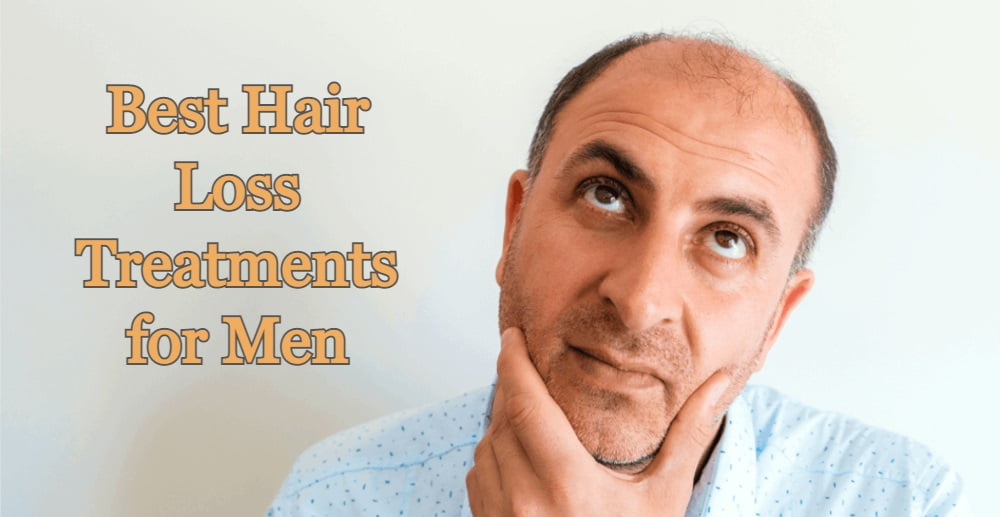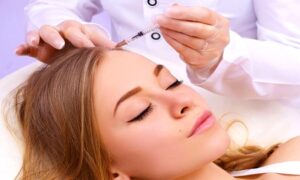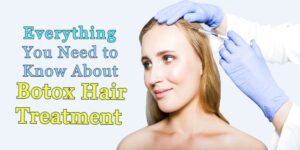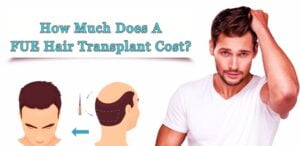Many men suffer from hair loss. It has become a serious issue this time. Let’s find out the main causes of hair loss in men and what is the best hair loss treatment for men?

What Causes Hair Loss in Men and How to Treat Male Hair Loss?
In this article, we will talk about the causes of hair loss in men, how to treat it with medical methods, and some natural recipes.
Hair Loss in Men
Many people suffer from hair loss problems. Hair loss may occur as a result of many reasons, including genetics, hormonal changes, or some diseases and medications. Hair loss can occur on the scalp or even the entire body, and it may affect all groups of men, women or even children but it is more common in men than women.
As for baldness, it occurs as a result of excessive hair loss, as hereditary hair loss with age is one of the most common causes of its occurrence.
Some people are not embarrassed by the problem of baldness or even to treat it, and others use different hairstyles, cosmetics, or even scarves and hats to cover their baldness.
There are a group of people who choose to use different treatment methods to stop the continuation of hair loss and restore its growth again.
Therefore, before pursuing hair loss treatment for men, you should consult a doctor to discuss the causes of hair loss and the best treatment options for that.
Symptoms of Hair Loss in Men
Several symptoms and signs of hair loss appear in men, including the following:
- Weakness of hair on the scalp.
- Receding hairline.
- Baldness in the front of the head in the form of a horseshoe.
Causes of Hair Loss in Men
There are three main causes of hair loss in men, which are:
- Family history (heredity): This type of hair loss in men is known as androgenetic alopecia, as men get it most often from fathers, or from some relatives in the same family. Doctors did not fully understand the cause of this problem, or why this type of baldness occurs gradually for most men, but what they can know is that this happens due to family history, and it usually begins to appear at the beginning of adolescence.
- Aging: Almost everyone experiences some hair loss with age. As you age, your body goes through many changes, and your hair is no exception. As hair ages, hair strands become smaller, less pigmented, and have a shorter life cycle. So the thick, coarse hair of a young adult eventually turns into thin, fine, light-colored hair. This hair is usually replaced with new, finer hair but sometimes the hair loss can be permanent.
- Hormonal Imbalance: Men can develop hormonal imbalances that can cause hair to thin or fall out. Although most people think issues with your thyroid can also lead to hair thinning. Often, treating the hormone imbalance helps your hair regrow. The hormone has an essential role in the body. Hormonal imbalances occur when there is too much or too little hormone in the bloodstream, even minor hormonal imbalances can cause side effects throughout the body. Other causes of hormonal imbalance may include poor diet and nutrition, unhealthy lifestyle, chronic stress, being overweight, misuse of anabolic steroid medications, etc.
These reasons contribute to the shrinkage or gradual shrinkage of the hair follicle cavities in the scalp, which leads to the hair growing weaker and shorter until it comes that the hair does not grow again.
Most men of the white race develop a state of baldness to a certain degree. This is due to age or their genetic makeup. Half of them may suffer from baldness before the age of 50, and then the percentage reaches 80% of them before the age of 70 years, while those of Chinese or Japanese ethnicity are less affected.
Also, men who have first and second-degree relatives who suffer from hair loss are also more likely to lose hair than others.
Best Hair Loss Treatment for Men
There are several treatments for hair loss in men. Here is the best hair loss treatment for men:
Hair transplantation: The most common hair transplant operations are follicular unit transplantation (FUT) and follicular unit extraction (FUE). Follicular unit transplantation is based on removing some of the skin from the back of the scalp, where this area has an abundance of hair, and then re-growing hair follicles in the part of the scalp that suffers from hair loss.
Follicular unit extraction is based on removing hair follicles directly from the scalp and transplanting them into the balding parts of the scalp.
It should be noted that hair transplant operations are surgical operations that may be expensive and painful. There are several potential risks, including infection, inflammation, and scarring, and a person may need multiple hair transplant treatments to get the desired result.
Low-level laser therapy (LLLT): There are few studies that support the treatment of hair loss through laser, but it is believed that laser treatment reduces the inflammation that affects hair follicles and prevents them from growing again. But a 2016 research review determined that low-level laser therapy may be a safe and effective treatment for men with hair loss, but this area still needs more research.
Scalp massage: Scalp massage stimulates hair follicles. In a small study, healthy Japanese men who got a four-minute scalp massage per day for 24 weeks, found that their hair became thicker at the end of the study period.
Medication: Some medicines such as Minoxidil (Rogaine) which is found as a liquid or foam that is placed on the scalp twice a day. It stimulates hair growth and prevents its loss. Another medicine is Finasteride (Propecia), which is only available with a prescription, and it may take time to notice results from both drugs.
There are other medications that can be used to treat hair loss such as spironolactone (Carospir, Aldactone) and oral dutasteride (Avodart).
Biotin: Biotin is a naturally healthy vitamin found in many foods such as walnuts, eggs, onions, sweet potatoes, and oatmeal.
Some evidence has been found to suggest that oral biotin supplements slow the hair loss process, but it is worth noting that most of this research has been conducted on women, not men.
Balanced diet: A healthy balanced diet is reflected in the enjoyment of healthy hair, as the diet should contain a variety of vegetables, fruits, whole grains, unsaturated fats, and proteins.
It was found that there is a link between healthy hair and the presence of proteins and minerals in a person’s diet, and iron-rich foods such as lean beef, beans and green leafy vegetables, iron-fortified cereals and eggs should also be added. Also foods rich in omega-3 fatty acids, such as salmon, mackerel, tuna, flaxseeds, egg yolks, hemp seeds, and walnuts.
You should also add foods rich in protein, such as eggs, lean meats, and many seafoods, and you should drink plenty of water as well.
Reducing stress: Stress has many negative effects on the body, as well as the hair. Hair loss may be the result of a stressful lifestyle. Therefore, we recommend that you follow different strategies to reduce stress such as yoga, exercise, listening to music, practicing meditation, and getting enough sleep. Sleep is very necessary to reduce stress and fatigue.
Quitting Smoking: Smoking has many negative effects on human health, and may also cause hair loss, facial wrinkles, and premature graying of hair as well.
Several studies have also determined that there is a link between smoking and hair loss, so you must quit smoking as soon as possible if there is a desire to get rid of the problem of hair loss.
Read Also: 20 Best Hair Care and Styling Tips For Every Hair Type
Natural Homemade Recipes to Grow Your Hair Fast
There are many home remedies that can reduce baldness, treat hair loss and help grow your hair faster naturally at home, including:
Aloe vera recipe:
Aloe vera contains many valuable benefits for hair. It promotes healthy hair growth, and it also contains alkaline properties that help raise the pH level of the hair and scalp to the desired degree, which may support hair growth.
In addition, the regular use of the aloe vera recipe works to reduce dandruff, relieve the itching of the scalp, reduce redness and inflammation of the scalp, as well as give the hair the desired strength and luster.
Ingredients: Aloe Vera juice or gel.
How to prepare and use: Apply aloe vera juice or gel on the scalp. Leave the recipe on the hair for a few hours, and then wash it with lukewarm water. Repeat the recipe 3-4 times a week, and you can also take a tablespoon of aloe vera juice daily on an empty stomach to get better results for hair growth.
Licorice Root Recipe:
Licorice root is a herb that prevents hair loss and repairs various damages that may be caused to the hair. As the soothing properties of the licorice root herb open the pores, calm and soften the scalp, reduce irritation, and reduce dry flakes on the scalp. This recipe is a good recipe for both dandruff, hair loss, and baldness as well.
Ingredients: One tablespoon of licorice root powder. One cup of milk. A quarter of a teaspoon of saffron.
How to prepare and use: Add one tablespoon of licorice root powder to one cup of milk and a quarter teaspoon of saffron, and stir the mixture well to form a cohesive paste. Apply the paste that was formed on the areas that suffer from hair loss or the onset of baldness before going to sleep, and leave it from night until morning. Wash your hair when you get up in the morning. Repeat this recipe once or twice a week, and licorice root tea can be taken three times a day to get better results.
Amla Recipe:
Indian gooseberry or amla, scientifically known as Phyllanthus emblica Linn or Emblica officinalis Gaertn. The Indian gooseberry works on the growth of hair naturally, healthy and fast, and is a rich source of vitamin C, whose deficiency in the body is a cause of hair loss, and the Indian gooseberry contains anti-inflammatory and antibacterial properties.
It also contains antioxidants, in addition to containing exfoliating properties that help maintain a healthy scalp and promote healthy hair growth.
Ingredients: One tablespoon of Indian gooseberry or amla pulp. One tablespoon of lemon juice.
How to prepare and use: Mix one tablespoon of Indian gooseberry or amla pulp with one tablespoon of lemon juice. Massage the scalp with the previous mixture well, and then cover the hair with a shower cap. Leave the mixture on the hair from night until morning, then wash the hair with shampoo when you wake up in the morning.
Onion Juice Recipe:
Onion juice treats hair loss because it contains a high percentage of sulfur, which helps improve blood circulation in the hair follicles and reduces inflammation. It also contains antibacterial properties that kill germs and parasites and treat scalp infections that cause hair loss.
Ingredients: Three tablespoons of onion juice. Two tablespoons of aloe vera gel. One tablespoon of olive oil.
How to prepare and use: Mix the ingredients, put the mixture on the hair for at least 30 minutes, then rinse it with shampoo. Repeat this method two to three times a week for several weeks.
Hair Massage Oils:
Massaging the hair using suitable hair oil, increases blood flow to the hair follicles and enhances the strength of the roots. It also encourages relaxation and reduces stress.
Ingredients: a quantity of coconut oil, almond oil, olive oil, castor oil, or others. A few drops of rosemary (rosemary) oil.
How to prepare and use: Mix rosemary oil with the chosen essential oil. Put the mixture on the hair and then massage the scalp well using the fingertips. Repeat it at least once a week.
Read Also: What is the Best Female Hair Loss Treatment?






[…] Read Also: What is the Best Hair Loss Treatment for Men? […]
[…] transplantation is the best hair loss treatment for men and even women. Doctors suggest that it takes some patience after hair transplant surgery because […]
[…] transplantation is one of the effective methods of hair loss treatment for men as well as female hair loss treatment. In general, the FUE hair transplant technique is one of the […]
[…] 2. What is the Best Hair Loss Treatment for Men? […]